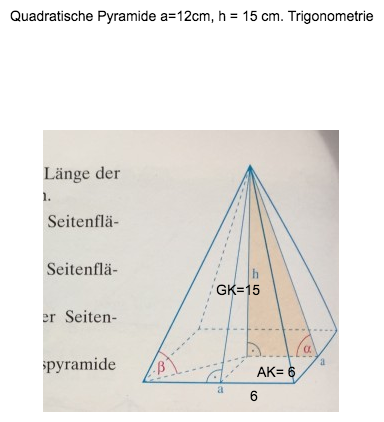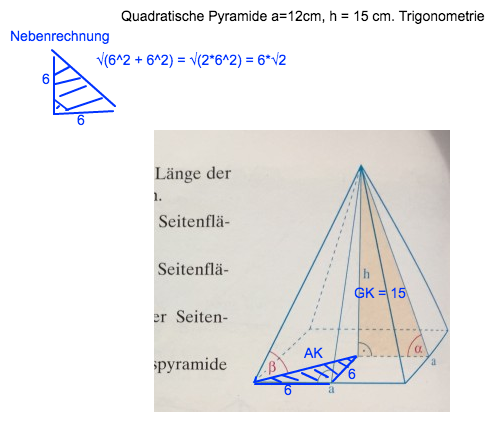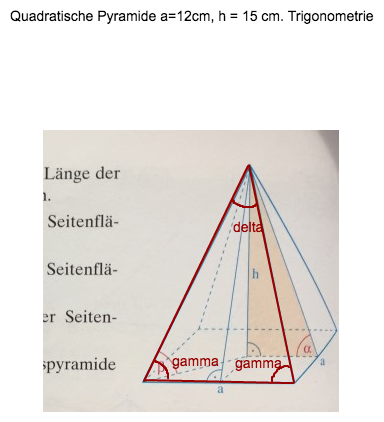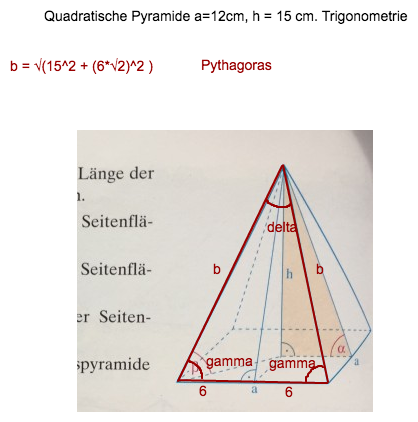a)
Neigungswinkel der Seitenfläche ist alpha hier:

tan(alpha) = Gegenkathete / Ankathete = GK / AK = 15/6
alpha = arctan(15/6) ≈ 68.2°
c) beta

beta = arctan(GK / AK) = arctan(15/(6*√2)) ≈ 60.5°
Bei b) suchst du die Winkel gamma und delta in:


b = √(225 + 72) = √(297)
gamma hat AK 6 und HYP √(297)
gamma = arccos( 6 / √(297) ) ≈ 69.63°
delta = 180° - 2*gamma ≈ 40.74°
Bei d) machst du dasselbe nochmals mit andern Zahlen. Das kannst du ja nun selbst.
Zur Kontrolle von d_(a) und d_(c) https://www.matheretter.de/rechner/pyramide